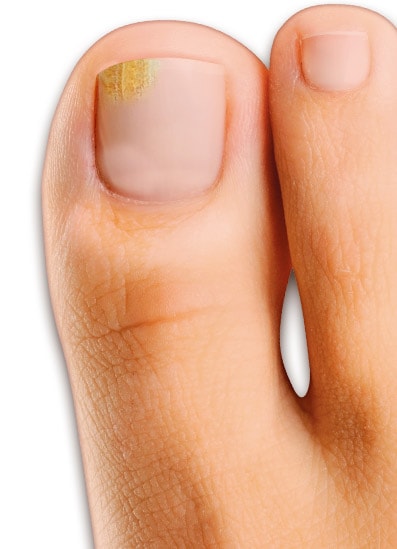Always read the label. Follow the directions for use. If symptoms persist, talk to your health professional.
Onychomycosis (pronounced ON-E-CO-MY-CO-SIS), also known as fungal nail infection, is a common condition that begins as a white or yellow spot under the tip of your fingernail or toenail. As the fungal infection goes deeper, nail fungus may cause your nail to discolour, thicken and crumble a the edge. It is important to treat fungal nail infections as they may become worse or spread if left untreated.1-3
Rejuvenail is indicated for mild to moderate fungal nail infections not involving the lunula.4
Fungal nail infections are caused by various fungal organisms (fungi).
Fungal nail infection can develop in people at any age, but it's more common in older adults. As the nail ages, it can become brittle and dry. The resulting cracks in the nail allow fungi to enter.
Warm and moist environments are ideal conditions for fungus to grow. Other factors that may cause fungal nail infections include pressure from tight footwear, injury to the nail, and pre-existing medical conditions.
Early treatment of a fungal nail infection is important so that the condition does not progress and cause pain and discomfort.
The most common clinical symptoms of onychomycosis are white or yellow discolouration of the nail, thickening of the nail and brittle nails.
The infected nail can exhibit a yellowish-brown appearance. Fungal-infected nails can become thickened and distorted and may cause pain and discomfort particularly when wearing shoes.
There are multiple factors that may increase the risk of developing a fungal nail infection.
These include:
Please consult your healthcare professional if you are unsure that Rejuvenail is right for you.

Available only through pharmacies
Always read the label. Follow the directions for use. If symptoms persist, talk to your health professional.